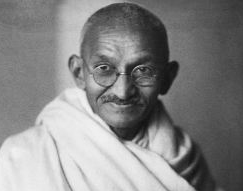 London, May 14: Three explosive letters that highlight Mahatma Gandhi's deep concerns over the behaviour of his eldest son, Harilal, will go under the hammer at an auction in England next week.
London, May 14: Three explosive letters that highlight Mahatma Gandhi's deep concerns over the behaviour of his eldest son, Harilal, will go under the hammer at an auction in England next week.
Mullock's Auctioneers based in Shropshire county are hoping to fetch between 50,000 pounds and 60,000 pounds for a set of three letters written by the Father of the Nation in June 1935.
"You should know that your problem has become much more difficult for me even more than our national freedom," says Gandhi in one of the letters in reference to allegations of inappropriate behaviour by Harilal.
"Manu is telling me a number of dangerous things about you. She says that you had raped her before she was eight years and she was so badly hurt that medical treatment was also required," the letter reads, in reference to Harilal's daughter Manu who had come to stay with her grandfather at Sabarmati Ashram.
"The letters are written in Gujarati and are in good condition. These have come via descent from a branch of Gandhi's family to the present vendor. As far as we are aware, they have never before been seen in public and as such they provide remarkable new information on the troubled relationship Gandhi had with his son," Mullock's said in a statement.
Harilal Gandhi had wanted to go to England to study to become a barrister like his father but the Mahatma had firmly opposed this believing a western education would not be helpful in the struggle against British Raj.
This led to Harilal renouncing all family ties in 1911 and his troubled relationship with his father continued throughout his life.
"Please let me have the pure truth, please tell me if you are still interested in alcohol and debauchery. I wish that you would rather die than resort to alcohol in any manner," adds another autographed letter.
The series of letters are part of Mullock's Historical Documents Sale at Ludlow Racecourse on May 22.





Comments
Add new comment